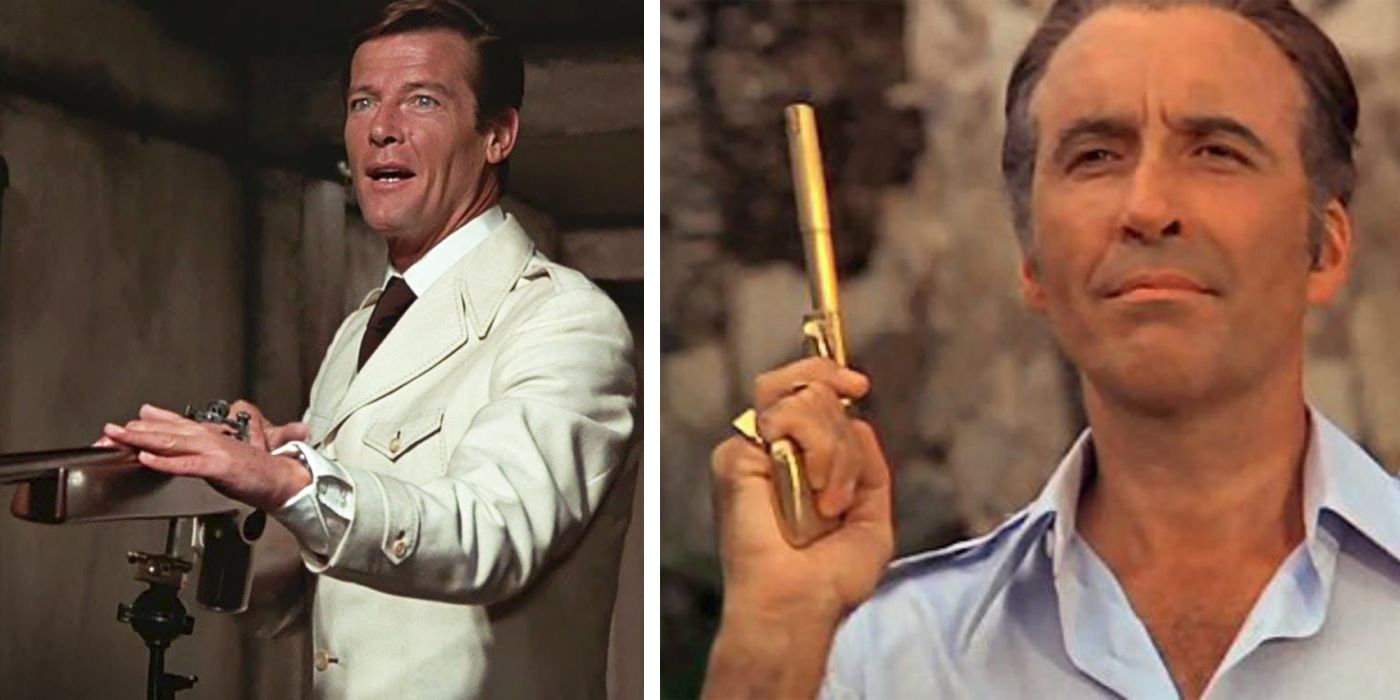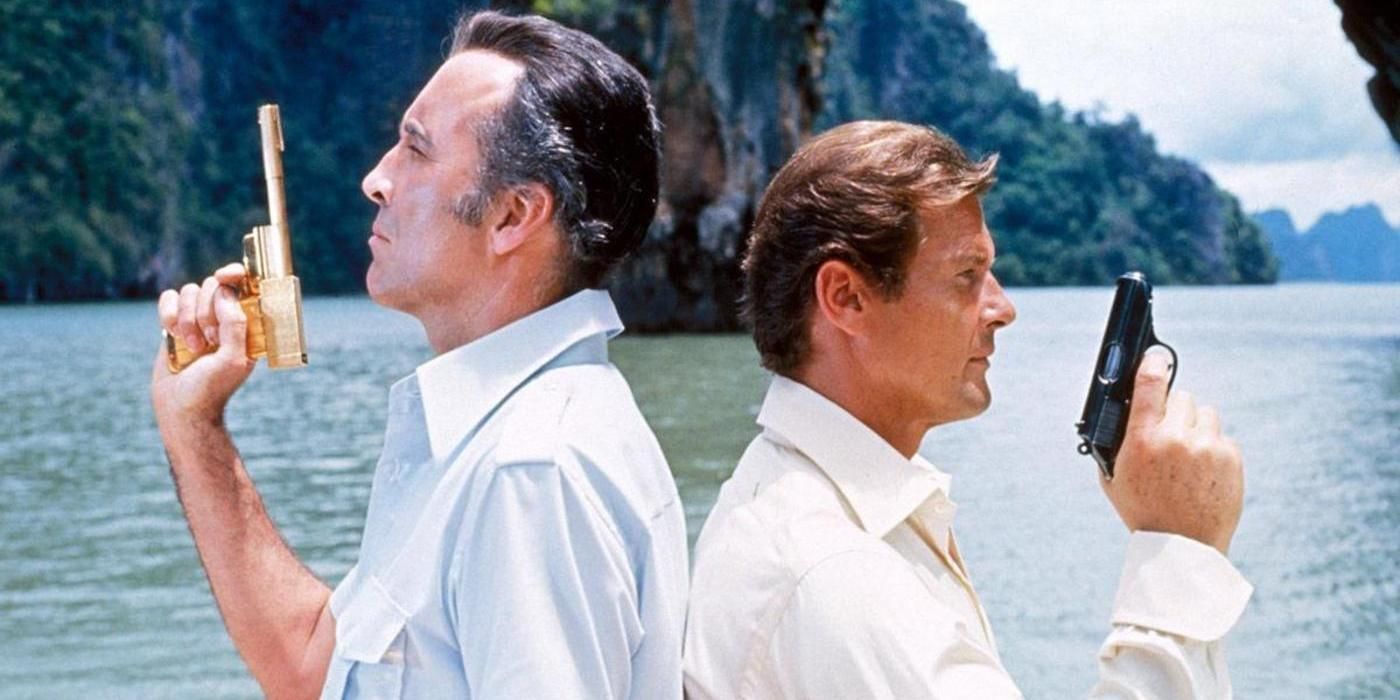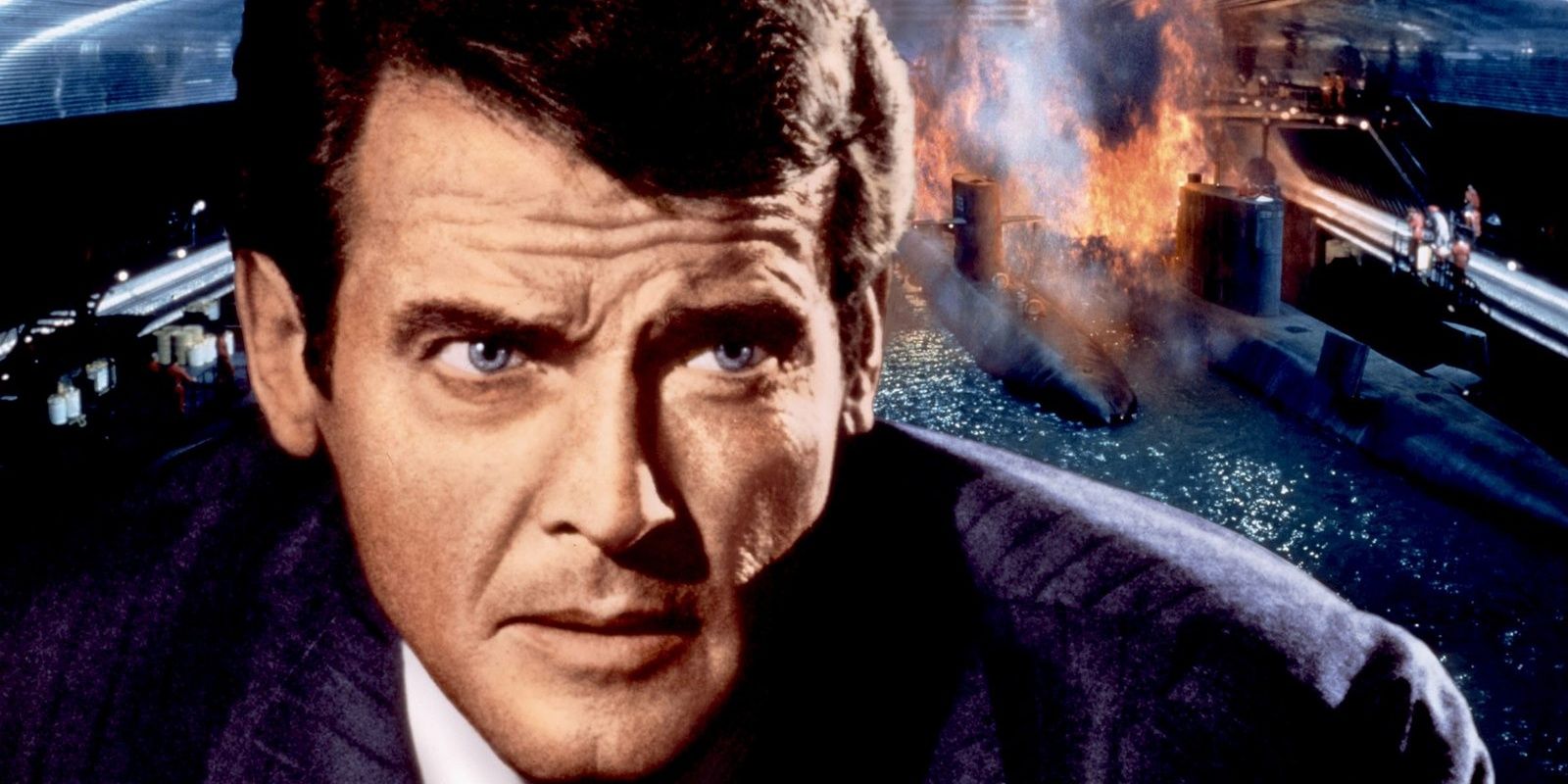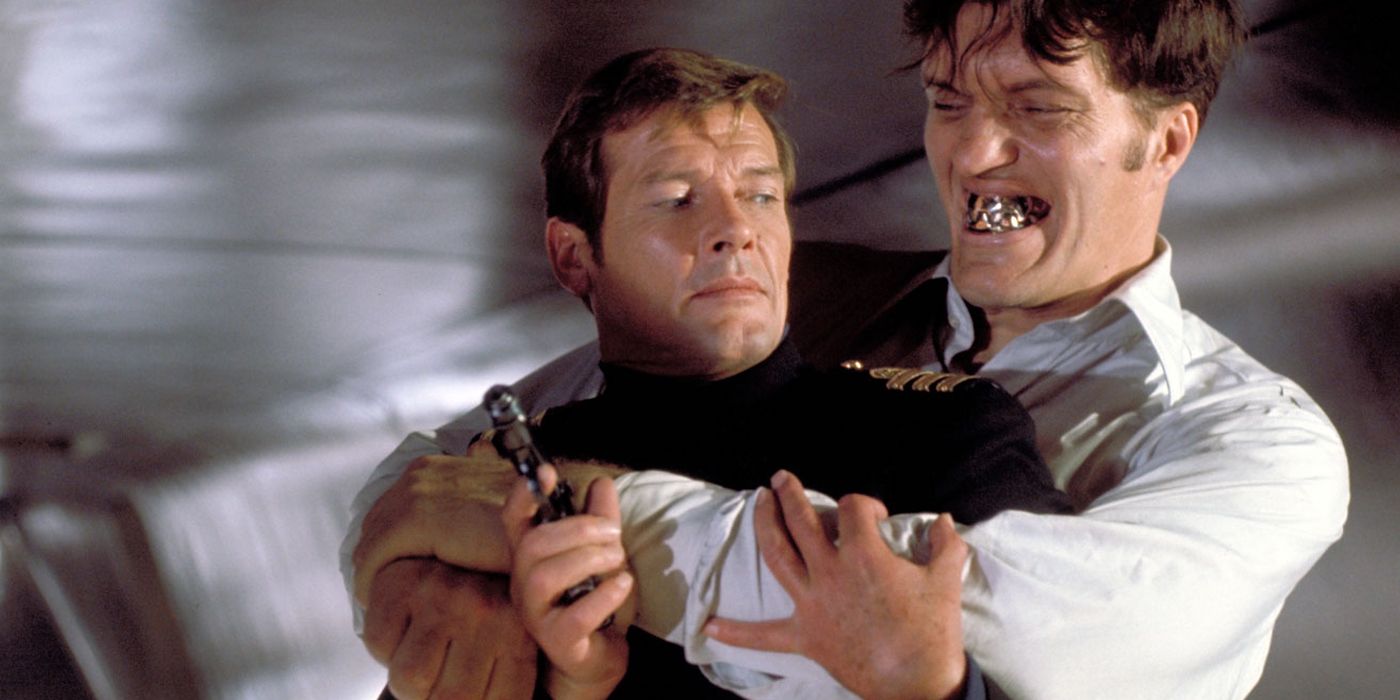
The fallout from The Man With The Golden Gun - the ninth film in the long-running James Bond series - came dangerously close to ending 007’s string of adventures. For a long time before, Bond was a stranger to failure. The worldwide triumph of 1964’s Goldfinger proved Bond to be a cinematic phenomenon that producers Harry Saltzman and Albert R. Broccoli were keen to continue. The loss of star Sean Connery in 1967 could not deter them, but the harsh response to George Lazenby’s debut in On Her Majesty’s Secret Service (1969) signalled the first inklings of Bond fatigue among audiences.
From then onward, the critical and financial success of the Bond franchise began to fluctuate like never before. Saltzman, Broccoli, and EON Productions were on uncharted ground. Connery’s anticipated return in Diamonds Are Forever (1971) proved a successful attempt at damage control, but his refusal to continue sent the producers back to the drawing board. Roger Moore, then famous for British show The Saint, was a welcomed, though predictable, replacement who paid off. Live and Let Die (1973) cured some distaste left by its predecessors and amounted a $161 million gross - the most successful Bond movie to that point.
But just as a new lucrative era was seemingly dawning, The Man with the Golden Gun (1974) set everything back. Audiences didn’t turn out like they had before, and the reviews were scathing. Things weren’t prettier behind the scenes as creative tensions began to rise. Producer Broccoli treated this adversity as a wakeup call, and the creative decisions he made in its aftermath took form in The Spy Who Loved Me (1977) - the wildly successful Bond film that echoes through the franchise to this day.

On paper, The Man with the Golden Gun had the usual ingredients for success, as well as some surprises. EON had again enlisted the talent integral to the series’ early hits, including director Guy Hamilton, screenwriter Richard Maibaum, and composer John Barry, along with co-writer Tom Mankiewicz, who had worked on the preceding two Bond films. Swedish actress Britt Ekland and a villainous Christopher Lee joined Bond in an Asian adventure that fused car chases and gun fights with break-neck martial arts - a clear attempt to capitalize on the Bruce Lee films of the era. But evidently, this appeal was not enough.
Released in December 1974, The Man with the Golden Gun failed to improve on the heights of Live and Let Die, with a shocking $70 million drop at the worldwide box office. Additionally, critics loathed what they saw as campy humor, unrealistic fight scenes, a messy narrative, an uneven tone, and a waste of great ideas; Lee’s portrayal of Scaramanga - a dark, mirror image of Bond - was praised and still ranks high in Bond’s rogues' gallery.
Outside of such negative word of mouth, The Man with the Golden Gun’s failure was attributed to its stiff competition and lack of marketing. Distributor United Artists had an overconfidence in Bond’s clout after Live and Let Die, and any potential thunder for The Man with the Golden Gun had been stolen by blockbusters like The Towering Inferno and The Godfather Part II, released that same month. While The Man with the Golden Gun was not disastrous, there was still little reason for a Bond film to fall so far so quickly. The dip was the last straw to Broccoli, who sought to retool once he’d gotten over various hurdles hindering the Bond franchise overall.

After The Man with the Golden Gun, creative and legal boundaries reared their head and were certain to put Bond on ice. Conflicts between Saltzman and Broccoli had been brewing as the franchise began to see new lows. Pivotally, Saltzman had experienced a number of personal and financial issues that took a toll on him, and after some debt trouble with Swiss banks, he was eventually forced to sell his share of the Bond franchise.
The Spy Who Loved Me had been planned since The Man with the Golden Gun’s wrap, but was beset with troubles throughout development. First, a contract clause barred EON from adapting Ian Fleming’s original novel, necessitating for the very first time an original Bond screenplay. Further, an injunction suit filed by Thunderball producer Kevin McClory halted an initial back-to-basics approach for The Spy Who Loved Me, as it featured SPECTRE and Blofeld’s return to Bond after six years. Director Guy Hamilton’s planned return was also stopped, prompted by The Spy Who Loved Me’s constant script rewrites and his commitment to Superman (eventually directed by Richard Donner.) In a deliberate gamble to bolster the series’ reputation, sole producer Brocolli doubled the budget and was intent to make The Spy Who Loved Me on a grandiose scale reminiscent of the Connery films, recruiting You Only Live Twice director Lewis Gilbert and production designer Ken Adam.
Once everything had been secured, Broccoli and EON Productions had the green light to begin production. These battles were an uphill struggle, rendering The Spy Who Loved Me a long time in the making. Three years seems nothing between Bond films in hindsight, but it was an unprecedented absence and hurt the momentum of a series that had remained reliably consistent for 12 years. A big question at EON was whether or not interest in Bond had been maintained through this long period, and whether The Spy Who Loved Me’s release would spell ultimate doom or a glorious rebound for the series.

The Spy Who Loved Me’s poster proclaimed it was the biggest Bond movie yet, and that’s indeed what it became. EON’s gamble proved fruitful as The Spy Who Loved Me overtook Live and Let Die to become the series’ biggest financial hit, taking $184 million worldwide. Contemporary reviews were very enthusiastic, and its legacy in Bond history is epitomised by the villain Stromberg and his underwater base, the iconic henchman Jaws, and the aquatic Lotus Esprit.
While certain plot details were suspiciously similar to You Only Live Twice, this didn’t seem to hinder the film’s critical success or legacy. It’s become known for cementing the Moore era of Bond, specifically for rounding out Moore’s interpretation of the character. Rather than imitate Connery’s bluntness like in the earlier films, director Gilbert helped Moore to play to his strengths, replacing Connery’s sharpness with a gentlemanly charm, while effortlessly retaining the trademark tongue-in-cheek humor.
The follow-up Moonraker took Bond to new heights in more ways than one, breaking The Spy Who Loved Me's financial records with $210 million. The series had low points in the decades after The Man with the Golden Gun, but Broccoli’s successors have taken notes from his motivation and perseverance to turn failure into success. As evidenced in the transitions from Die Another Die to Casino Royale, or Quantum of Solace to Skyfall, Barbara Broccoli and Michael G. Wilson have successfully demonstrated their key to Bond’s unique longevity: to have humility, learn from mistakes. and to push harder in the face of creative adversity, aiming to deliver the best Bond adventure possible.
from ScreenRant - Feed https://ift.tt/2UajDZG





No comments: